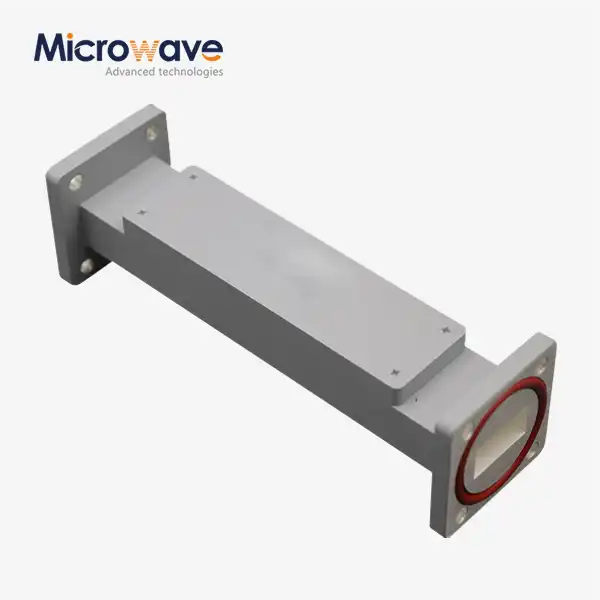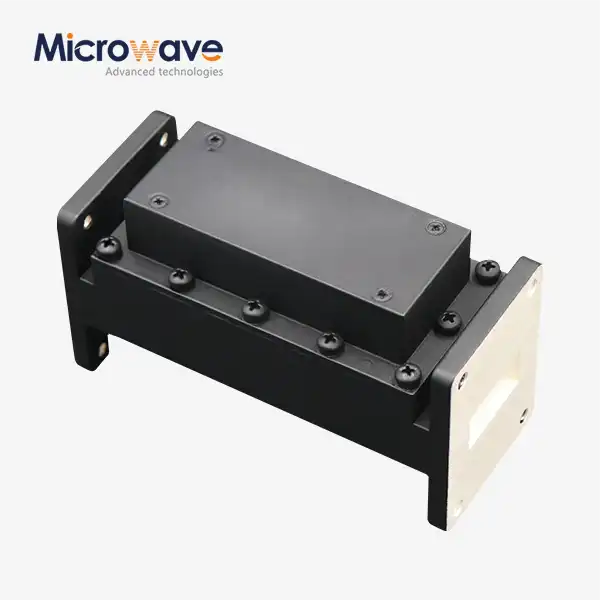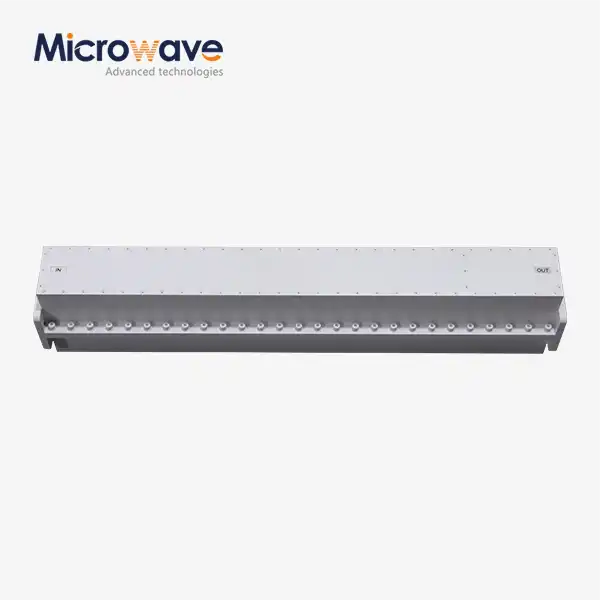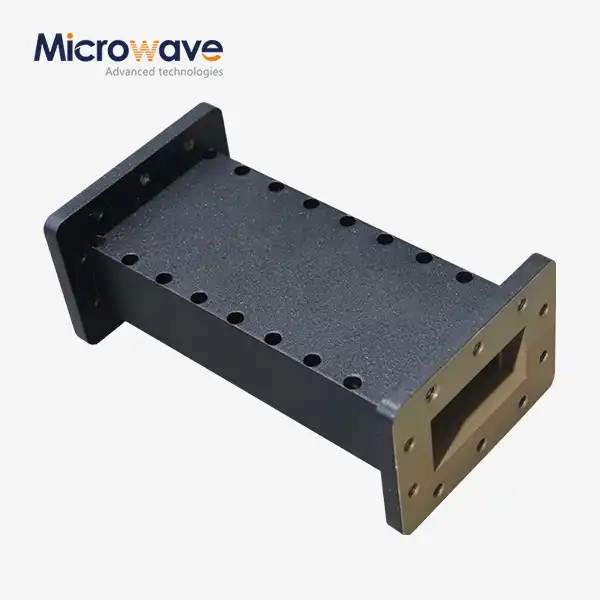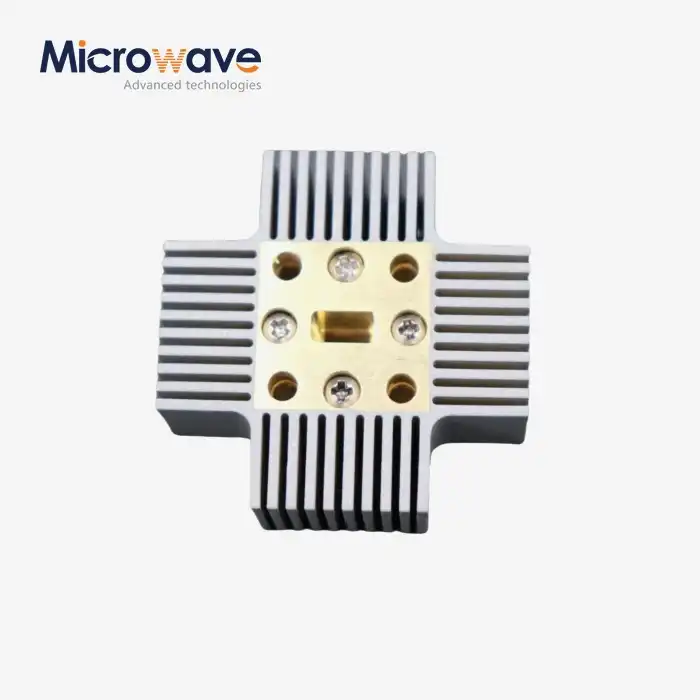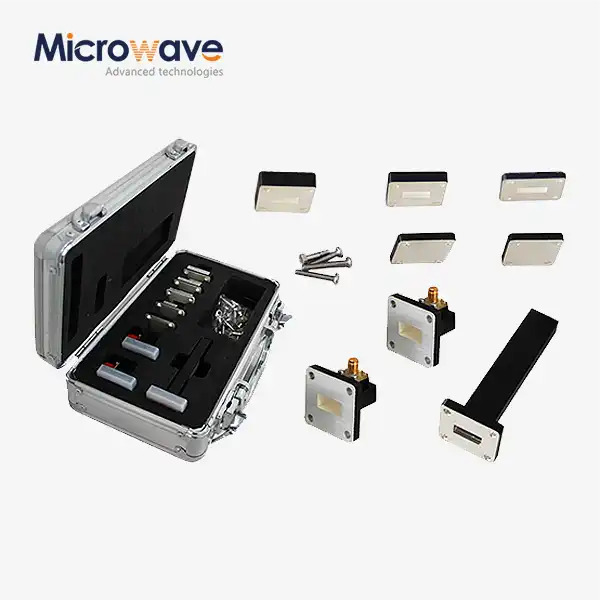What is the basic principle of a WG Low Pass Filter and how does it work in a waveguide system?
Waveguide Low Pass Filters (WG Low Pass Filters) are essential components in microwave communications and radar systems, designed to allow signals below a specific cutoff frequency to pass through while attenuating higher frequency signals. The basic principle of a WG Low Pass Filter relies on electromagnetic theory and the strategic placement of reactive elements within the waveguide structure. These filters operate by creating specific impedance characteristics that allow desired frequencies to propagate while blocking unwanted ones. In waveguide systems, they play a crucial role in maintaining signal integrity by eliminating harmonics and spurious frequencies that could interfere with system performance, ensuring that only clean, high-quality signals reach sensitive components.
Fundamental Principles of WG Low Pass Filters
Electromagnetic Theory Behind Low Pass Filtering
The operation of WG Low Pass Filters is deeply rooted in fundamental electromagnetic principles. When electromagnetic waves travel through a waveguide, they interact with the physical structures within the guide according to Maxwell's equations. These interactions create specific impedance conditions that allow certain frequencies to pass while blocking others. In the case of a WG Low Pass Filter, the design includes carefully calculated reactive elements—typically inductive irises or capacitive posts—that present low impedance to frequencies below the cutoff point and high impedance to frequencies above it. This impedance transformation occurs because low-frequency signals can navigate through the filter structure with minimal interaction, while high-frequency signals encounter resonant conditions that cause reflection. The filter's behavior can be analyzed using equivalent circuit models where inductors and capacitors represent the waveguide's electromagnetic properties. Advanced Microwave's WG Low Pass Filters implement these principles with exceptional precision, using high-grade aluminum or copper materials to ensure optimal electromagnetic performance across a wide range of applications including telecommunications infrastructure, satellite communication systems, and advanced radar installations.
Structural Design Elements of WG Low Pass Filters
The physical structure of a WG Low Pass Filter is carefully engineered to achieve the desired frequency response characteristics. The filter typically consists of a series of sections with alternating high and low impedance characteristics, created through strategic modifications to the waveguide's cross-sectional dimensions. These modifications include implementing corrugated structures, stepped impedance elements, or introducing posts and irises at calculated intervals. Each of these structural elements contributes to the filter's overall transfer function by creating specific reactive properties that affect electromagnetic wave propagation. The dimensions, spacing, and number of these elements determine critical filter parameters such as cutoff frequency, stopband attenuation, and passband flatness. Advanced Microwave Technologies Co., Ltd specializes in designing WG Low Pass Filters with precise structural elements, optimized through sophisticated electromagnetic simulation tools and verified through rigorous testing. Our filters are available in various frequency bands including C, X, Ku, and Ka, with custom designs tailored to specific applications. The advanced structural engineering enables our WG Low Pass Filters to achieve superior performance with minimal insertion loss and excellent power handling capability, making them ideal for critical applications in aerospace, defense, and telecommunications sectors.
Frequency Response Characteristics and Parameters
Understanding the frequency response characteristics is crucial for proper implementation of WG Low Pass Filters in microwave systems. These filters are characterized by several key parameters that define their performance. The cutoff frequency is the primary specification, marking the boundary between the passband and stopband. In the passband (frequencies below cutoff), the filter exhibits low insertion loss, typically less than 0.5 dB in high-quality filters like those from Advanced Microwave Technologies. Beyond the cutoff frequency, the filter's attenuation increases rapidly, with the rate of rolloff determined by the filter order. Higher-order filters provide steeper rolloff but may introduce more complexity and insertion loss. Another critical parameter is return loss, which indicates how well the filter is matched to the system impedance. Advanced Microwave's WG Low Pass Filters feature excellent return loss characteristics, typically exceeding 20 dB in the passband, ensuring minimal signal reflection and maximum power transfer. The filter's power handling capability is another important consideration, particularly in high-power applications such as radar systems and satellite communications. Our filters are designed to handle high power levels without degradation or performance issues, making them suitable for demanding environments. The frequency response of WG Low Pass Filters can be tailored through customization options, allowing engineers to optimize performance for specific application requirements while maintaining the essential filtering characteristics.

Implementation and Applications of WG Low Pass Filters
Integration in Complex Waveguide Systems
Integrating WG Low Pass Filters into complex waveguide systems requires careful consideration of several factors to ensure optimal system performance. The physical dimensions of the filter must be compatible with the waveguide system, maintaining proper flange connections and alignment to prevent signal leakage or reflection. Proper installation is crucial, as even minor misalignments can introduce unwanted reflections or losses. When designing a system with WG Low Pass Filters, engineers must account for the filter's impact on the overall signal path, including any phase shifts introduced by the filter. These phase considerations are particularly important in phased array systems or applications requiring precise timing. Advanced Microwave Technologies' WG Low Pass Filters are designed with system integration in mind, featuring standard flange connections compatible with common waveguide systems while maintaining the compact form factor necessary for space-constrained applications. Our filters are manufactured to tight tolerances, ensuring consistent performance across production runs and reliable operation when integrated into larger systems. For particularly complex systems, Advanced Microwave offers technical support and customization options to address specific integration challenges. Our team works closely with customers to ensure that the WG Low Pass Filter meets both the electrical specifications and the mechanical requirements of the system, providing a seamless integration experience that minimizes installation issues and maximizes system performance.
Industry-Specific Applications and Requirements
WG Low Pass Filters serve critical functions across numerous industries, each with unique requirements and performance expectations. In the telecommunications sector, these filters are essential components in base station equipment and microwave backhaul systems, where they help maintain signal integrity by suppressing harmonics and spurious emissions. The aerospace and defense industries rely on WG Low Pass Filters for radar systems, electronic warfare equipment, and satellite communications, where reliability under extreme conditions is paramount. For these applications, Advanced Microwave Technologies provides high-performance WG Low Pass Filters designed to withstand harsh environments while maintaining consistent electrical characteristics. In satellite communication systems, our filters operate efficiently across various frequency bands including C, X, Ku, and Ka, supporting both uplink and downlink operations with minimal signal degradation. Research and development laboratories benefit from the precision and repeatability of our WG Low Pass Filters in test and measurement setups, where accurate signal conditioning is essential for valid experimental results. Each industry has specific requirements regarding power handling, frequency range, and environmental conditions. Advanced Microwave Technologies addresses these varied needs through our comprehensive product line and customization capabilities, ensuring that each customer receives a WG Low Pass Filter optimized for their particular application. Our filters are RoHS compliant and environmentally friendly, meeting the increasing demand for sustainable components in modern electronic systems while maintaining the high performance standards required by these demanding applications.
Performance Optimization and Troubleshooting
Achieving optimal performance from WG Low Pass Filters requires attention to both the initial system design and ongoing maintenance considerations. During the design phase, engineers should carefully evaluate the filter specifications against system requirements, ensuring that parameters such as cutoff frequency, stopband attenuation, and power handling capability align with the intended application. Proper impedance matching between the filter and surrounding components is essential for minimizing reflections and maximizing power transfer. Advanced Microwave Technologies' WG Low Pass Filters are designed for low insertion loss, with typical values below 0.5 dB in the passband, helping maintain system efficiency and signal quality. When troubleshooting issues involving WG Low Pass Filters, common problems include unexpected signal attenuation, interference from harmonics, or degraded system performance. These issues may stem from filter damage, improper installation, or operation outside the specified frequency range or power levels. Our technical support team provides comprehensive assistance in diagnosing and resolving such problems, offering guidance on proper installation techniques and performance verification procedures. To extend filter lifespan and maintain consistent performance, periodic inspection and testing are recommended, particularly in high-power applications where thermal stress may affect filter characteristics over time. Advanced Microwave's WG Low Pass Filters are constructed from high-grade aluminum or copper, ensuring durability and stable performance even under challenging operating conditions. For customers requiring increased assurance of reliability, we offer enhanced testing options and detailed performance reports, providing comprehensive documentation of filter characteristics across the specified frequency range.
Advanced Design Considerations for WG Low Pass Filters
Material Selection and Manufacturing Processes
The choice of materials and manufacturing processes significantly impacts the performance and reliability of WG Low Pass Filters. Advanced Microwave Technologies carefully selects materials based on electrical conductivity, thermal stability, and mechanical properties to ensure optimal filter performance across various operating conditions. Our filters typically employ high-grade aluminum or copper for the waveguide body, providing excellent electrical conductivity while maintaining reasonable weight and cost. For applications requiring enhanced performance or specific characteristics, we offer filters constructed from specialized materials such as silver-plated copper or aluminum alloys with superior thermal properties. The internal structures responsible for the filtering action are manufactured using precision machining techniques, ensuring dimensional accuracy within tight tolerances—typically ±0.001 inches for critical dimensions. This precision is essential for maintaining consistent filter performance across production runs and achieving the designed frequency response. Our manufacturing processes include computer-controlled milling, electrical discharge machining for complex internal features, and specialized plating techniques to enhance conductivity and corrosion resistance. Advanced Microwave's WG Low Pass Filters undergo rigorous quality control inspections throughout the manufacturing process, including dimensional verification, plating thickness measurement, and visual inspection for defects. The completed filters are subjected to comprehensive electrical testing using advanced network analyzers to verify compliance with design specifications before shipping to customers. These careful material selections and manufacturing processes enable our WG Low Pass Filters to achieve the superior performance required for critical applications in aerospace, defense, and telecommunications while maintaining the reliability needed for long-term operation in demanding environments.
Customization Options and Design Flexibility
Advanced Microwave Technologies recognizes that standard filter configurations may not address all customer requirements, particularly in specialized applications with unique performance specifications. Our engineering team offers extensive customization options for WG Low Pass Filters, allowing customers to specify parameters such as cutoff frequency, stopband attenuation, passband flatness, and power handling capability. Custom designs can accommodate non-standard waveguide sizes, specialized flanges, or integration features that facilitate incorporation into specific system architectures. The customization process begins with a detailed consultation to understand the application requirements, followed by electromagnetic simulation and optimization to develop a filter design that meets the specified performance criteria. Prototype development and testing verify the design's performance before proceeding to production. Our design flexibility extends to mechanical aspects as well, with options for modified mounting configurations, specialized surface treatments, or integral features that simplify system integration. For customers with space constraints, we can develop compact WG Low Pass Filter designs that maintain performance while minimizing footprint. Advanced Microwave's WG Low Pass Filters can be customized to operate in specific environmental conditions, including extended temperature ranges, high-humidity environments, or applications requiring resistance to mechanical shock and vibration. This extensive customization capability enables our filters to address diverse application requirements across industries, from satellite communications to defense systems and scientific research equipment. The combination of electromagnetic expertise, advanced simulation tools, and precision manufacturing capabilities allows Advanced Microwave Technologies to develop customized WG Low Pass Filters that deliver optimal performance while addressing the specific challenges of each customer's application.
Advanced Electromagnetic Simulation and Analysis
Modern WG Low Pass Filter design relies heavily on sophisticated electromagnetic simulation tools that provide detailed insight into filter behavior before physical prototyping. Advanced Microwave Technologies employs state-of-the-art simulation software utilizing techniques such as the Finite Element Method (FEM) and the Method of Moments (MoM) to analyze filter performance with exceptional accuracy. These simulations model the complete electromagnetic field distribution within the filter structure, accounting for complex interactions that would be difficult to predict using simplified analytical methods. The simulation process begins with creating a detailed 3D model of the filter geometry, followed by applying appropriate boundary conditions and excitation signals. The software then solves Maxwell's equations throughout the structure, generating comprehensive data on parameters such as insertion loss, return loss, and field distributions at various frequencies. This detailed analysis allows our engineers to identify potential issues such as unexpected resonances or field concentrations that might affect performance or power handling capability. Advanced Microwave's design process incorporates multiple simulation iterations, optimizing the filter structure to achieve the desired frequency response while maintaining practical manufacturability. The simulation results guide precise adjustments to dimensions and spacing of internal elements, ensuring that the manufactured filter will meet specified performance requirements. For particularly challenging applications, we can perform additional analyses such as thermal simulations to predict temperature distribution under high-power conditions or mechanical simulations to assess structural integrity under environmental stress. These advanced simulation capabilities enable Advanced Microwave Technologies to develop WG Low Pass Filters with exceptional performance characteristics, minimizing the need for physical prototyping and reducing development time and cost while ensuring that the final product meets or exceeds customer expectations.
Conclusion
WG Low Pass Filters represent a critical component in modern microwave and RF systems, applying fundamental electromagnetic principles to achieve precise frequency selectivity. Their ability to pass desired signals while rejecting unwanted frequencies makes them indispensable in telecommunications, defense, aerospace, and numerous other applications. Advanced Microwave Technologies' WG Low Pass Filters combine theoretical excellence with practical engineering to deliver superior performance in demanding environments.
Ready to enhance your system's performance with industry-leading waveguide solutions? Advanced Microwave Technologies offers unmatched expertise in custom filter design, backed by over 20 years of experience and ISO:9001:2008 certification. Our perfect supply chain system ensures consistent quality and competitive pricing, while our professional R&D team stands ready to address your unique challenges. Experience the difference that comes with a partner dedicated to excellence in microwave technology. Contact us today at sales@admicrowave.com to discuss your specific requirements and discover how our WG Low Pass Filters can elevate your system's performance.
References
1. Johnson, R.C. & Jasik, H. (2021). Antenna Engineering Handbook: Waveguide Components and Filtering Systems. McGraw-Hill Professional.
2. Williams, A.E. (2020). Microwave Filters, Impedance-Matching Networks, and Coupling Structures. Artech House Publishers.
3. Pozar, D.M. (2022). Microwave Engineering. John Wiley & Sons, Inc.
4. Cameron, R.J., Kudsia, C.M., & Mansour, R.R. (2018). Microwave Filters for Communication Systems: Fundamentals, Design, and Applications. Wiley-IEEE Press.
5. Hong, J.S. & Lancaster, M.J. (2019). Microstrip Filters for RF/Microwave Applications. John Wiley & Sons, Inc.
6. Matthaei, G.L., Young, L., & Jones, E.M.T. (2021). Microwave Filters, Impedance-Matching Networks, and Coupling Structures. Artech House.




